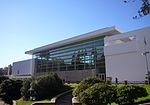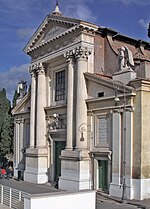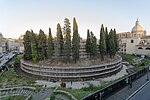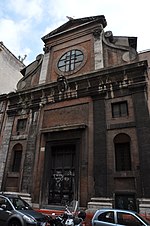Ara Pacis

The Ara Pacis Augustae (Latin, "Altar of Augustan Peace"; commonly shortened to Ara Pacis) is an altar in Rome dedicated to Pax Romana[1]. The monument was commissioned by the Roman Senate on July 4, 13 BC to honour the return of Augustus to Rome after three years in Hispania and Gaul and consecrated on January 30, 9 BC. Originally located on the northern outskirts of Rome, a Roman mile from the boundary of the pomerium on the west side of the Via Flaminia, the Ara Pacis stood in the northeastern corner of the Campus Martius, the former flood plain of the Tiber River and gradually became buried under 4 metres (13 ft) of silt deposits. It was reassembled in its current location, now the Museum of the Ara Pacis, in 1938, turned 90° counterclockwise from its original orientation so that the original western side now faces south.
Excerpt from the Wikipedia article Ara Pacis (License: CC BY-SA 3.0, Authors, Images).Ara Pacis
Lungotevere in Augusta, Rome Municipio Roma I
Geographical coordinates (GPS) Address Phone number Website Nearby Places Show on map
Geographical coordinates (GPS)
| Latitude | Longitude |
|---|---|
| N 41.906388888889 ° | E 12.475555555556 ° |
Address
Museo dell'Ara Pacis
Lungotevere in Augusta
00100 Rome, Municipio Roma I
Lazio, Italy
Open on Google Maps










